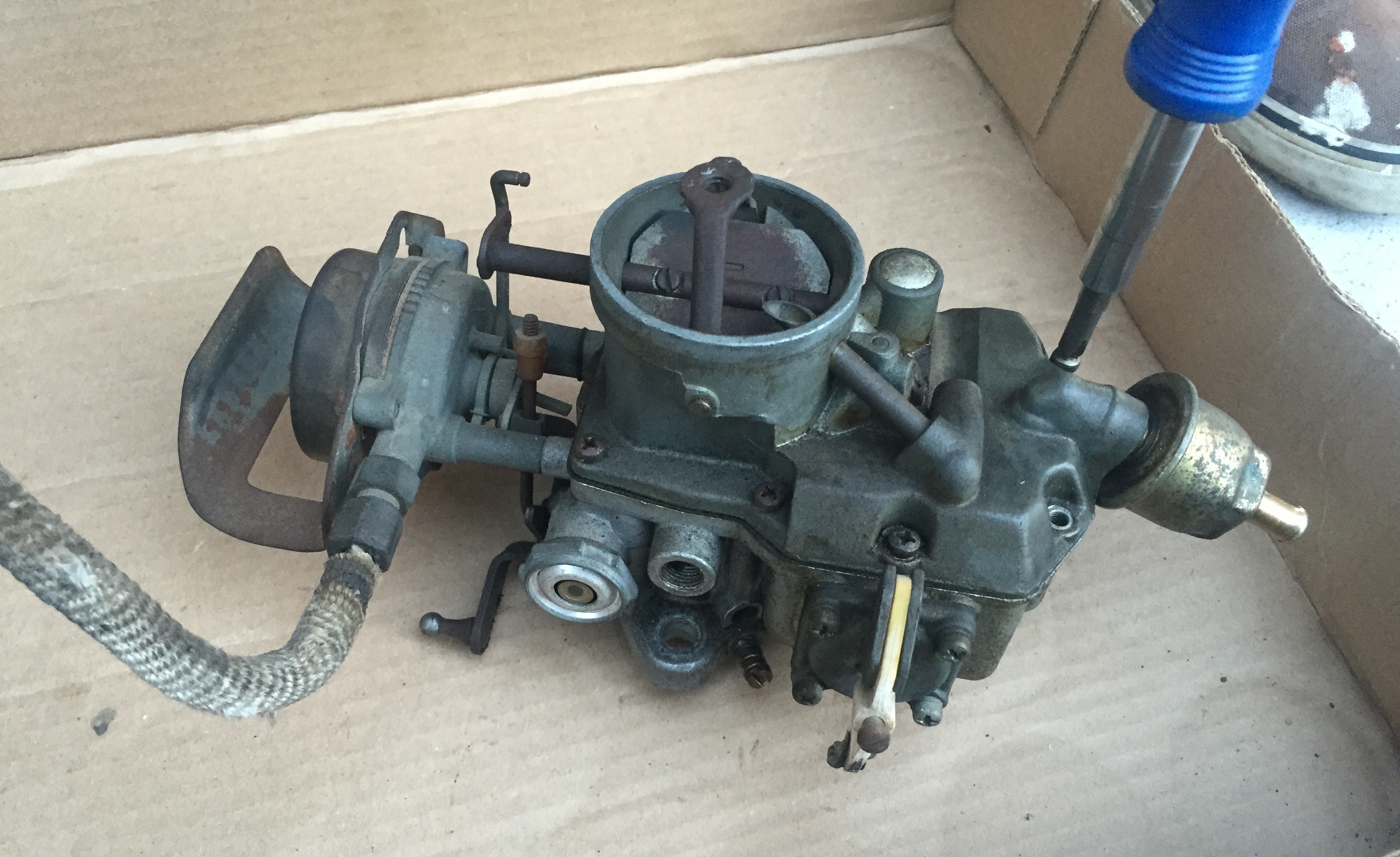
A carburetor is simply a miniature toilet bolted to the top of your motor. It consists of a float (just like your toilet) to meter the amount of fuel in the float bowl. Coincidentally, a toilet has a reservoir of water that is metered by a float.
So next time you go to the bathroom, remember you’re just sitting on a giant carburetor.
In all seriousness, a carburetor is a fairly simple device that plays a BIG role in how your car runs. The slightest particles of dirt can ruin your whole day if they get lodged where they don’t belong. A common problem on carburetor is the needle and seat getting stuck. This allows the float bowl to overflow with fuel resulting in a big mess of fuel spraying out of the top vent of the carburetor. This can also pose as a potential fire hazard since the unburned fuel can pour all over a hot engine.
The Autolite 1100 1bbl carburetor in Matt’s 1965 Mustang worked surprisingly well for being almost completely original, but we felt that it should be rebuilt to avoid any future issues.
Here are a few basic tips to help you along the way:
1. Take pictures. LOTS OF THEM
We had our iPhones out taking pictures of nearly everything even before we tore the thing apart. We’re lucky that the Autolite 1100 is a rather simple carburetor and doesn’t have many moving parts, but it still is a necessary thing to do. There are lots of little check balls and weights in this carburetor, be sure to document where they all came from.
2. Have a parts tray ready
We actually used an egg carton to organize all the screws and whatever we took off the carburetor. The last thing you want to do is lose anything.
3. Disassemble in a clean location
The carburetor was placed in a shallow cardboard box to minimize parts rolling around or any foreign contaminants that could potentially compromise the rebuild.
4. Be prepared to improvise
Sometimes it’s hard trying to figure out how to clean something. Old wire, compressed air and a tooth brush can become VERY handy when trying to clean a carburetor out. In our case, the float bowl looked like the bottom of a fish bowl. We ended up scrubbing it quite a bit to remove all the junk that had accumulated all across it. Carb cleaner usually comes with a spray nozzle to help you clear out passages, use this to your advantage!
Lastly, don’t throw anything away! Until you’ve finished the rebuild, do not throw anything away. You never know what you might need. The end result should be a relatively stress free rebuild, assuming you didn’t break anything along the way!
Stay tuned for another article on how to rebuild a Holley 4bbl carburetor.



